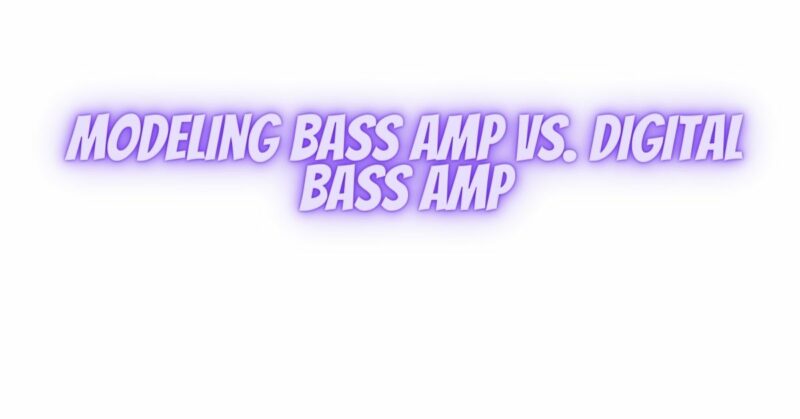When it comes to amplifying the sound of a bass guitar, players have various options to choose from, including traditional tube amps, solid-state amps, and more modern alternatives like modeling bass amps and digital bass amps. In this article, we’ll explore the differences between modeling bass amps and digital bass amps, helping bassists make an informed decision on which type of amplifier best suits their needs and preferences.
Modeling Bass Amp: Emulating Versatility
Modeling bass amps are designed to emulate the sound of multiple amplifiers, cabinets, and effects in a single unit. These amps use digital technology to recreate the sonic characteristics of various classic and modern bass amps. They offer a wide range of onboard effects, amp models, and speaker cabinet simulations, providing bassists with tremendous versatility and the ability to switch between different sounds easily.
Advantages of Modeling Bass Amps:
- Versatility: Modeling bass amps give players access to an extensive library of amp models and effects, allowing them to dial in various tones for different musical styles and genres.
- Portability: Many modeling bass amps are compact and lightweight, making them a practical choice for gigging musicians and those who require a portable setup.
- Cost-Effective: With a modeling bass amp, bassists can achieve the tones of multiple high-end amplifiers without having to purchase each one individually.
Digital Bass Amp: Solid-State Efficiency
Digital bass amps utilize digital signal processing (DSP) technology to shape the sound of the bass guitar. Unlike modeling amps, digital bass amps do not typically emulate specific amp models or effects. Instead, they focus on delivering clean, reliable amplification with DSP-based EQ, compression, and other processing options to enhance the bass tone.
Advantages of Digital Bass Amps:
- Transparent Sound: Digital bass amps are known for their clarity and transparency, preserving the natural characteristics of the bass guitar without coloration.
- Efficient Power: Digital bass amps often use Class D power amplifiers, which are highly efficient and capable of delivering significant power output with minimal heat generation.
- Reliability: Solid-state technology makes digital bass amps more durable and less prone to component wear and tear compared to tube amplifiers.
Choosing the Right Amp for Your Bass Needs
When deciding between a modeling bass amp and a digital bass amp, consider the following factors:
- Sound Versatility: If you desire a wide range of tones and effects and enjoy experimenting with various sounds, a modeling bass amp may be the better choice.
- Simplicity and Transparency: If you prefer a straightforward setup with a focus on clean and uncolored amplification, a digital bass amp might suit your needs.
- Budget: Both modeling and digital bass amps are available at various price points, so consider your budget and invest in an amp that aligns with your financial constraints.
- Portability: For bassists who travel frequently or perform in different locations, the weight and size of the amp can be a crucial consideration.
In conclusion, both modeling bass amps and digital bass amps have their distinct advantages and are suitable for different playing styles and preferences. The decision ultimately depends on the specific requirements and sonic goals of the bassist. Whether you seek versatility, simplicity, or a blend of both, exploring various models and trying them out in person will help you find the perfect bass amplifier that complements your playing style and enhances your overall musical experience.


